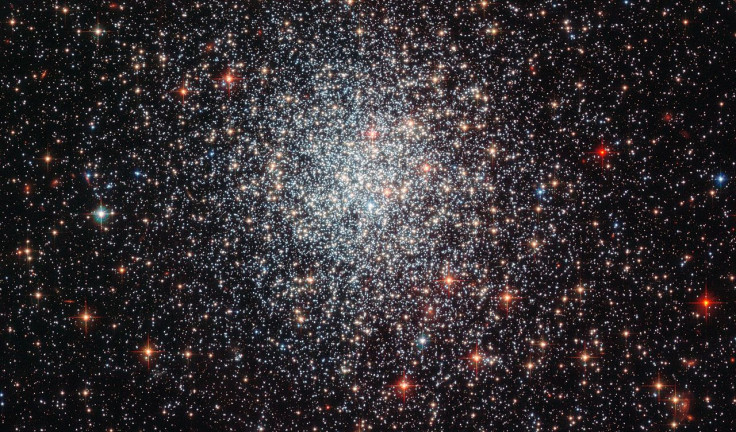Hubble Captures Outer Space 'Snow Globe' In Star Cluster Messier 79

The Hubble Space Telescope specializes in staring deep into the past of the universe. It launched in 1990 as a collaboration between NASA and the European Space Agency and has been working hard ever since.
The telescope orbits Earth as the dizzying speed of 17,000 miles per hour taking photos of our galaxy and others. It captured a mesmerizing photo of the globular star cluster Messier 79, also called M79 and NGC 1904, that sits in the constellation Lepus. NASA refers to these star clusters as snow globes because they almost look like swirling storms. The photo and GIF are actually made of several photos, or are composites, that show the details of the system.

The photo shows the cluster of as many as one million stars, the most central part of which holds 150,000 stars in just a small area that covers 118 light-years, according to NASA. The cluster sits 41,000 light-years from Earth and likely holds some of the oldest stars in the galaxy, some as old as 11.7 billion years.
These clusters are usually grouped around the center creating a sort of pinwheel shape. But this specific cluster is actually in the opposite direction of the center of the cluster, according to NASA. Researchers think this might have happened if the cluster had a higher density than other clusters like it or if it formed in a dwarf galaxy.
When looking at the photo, you probably notice a few different colors that stand out. The more yellow or amber colored stars are likely sun-like stars in the cluster. The red stars are giants at the end of their lives as stars and the blue stars get their color from the elements burning there like helium.
The very faint blue stars though as called “blue stragglers,” according to NASA, these are either the results of mergers between binary systems or collisions of unrelated stars. The cluster was discovered in 1780 by Pierre Méchain, who reported it to Charles Messier who it was eventually named after.
© Copyright IBTimes 2024. All rights reserved.





















